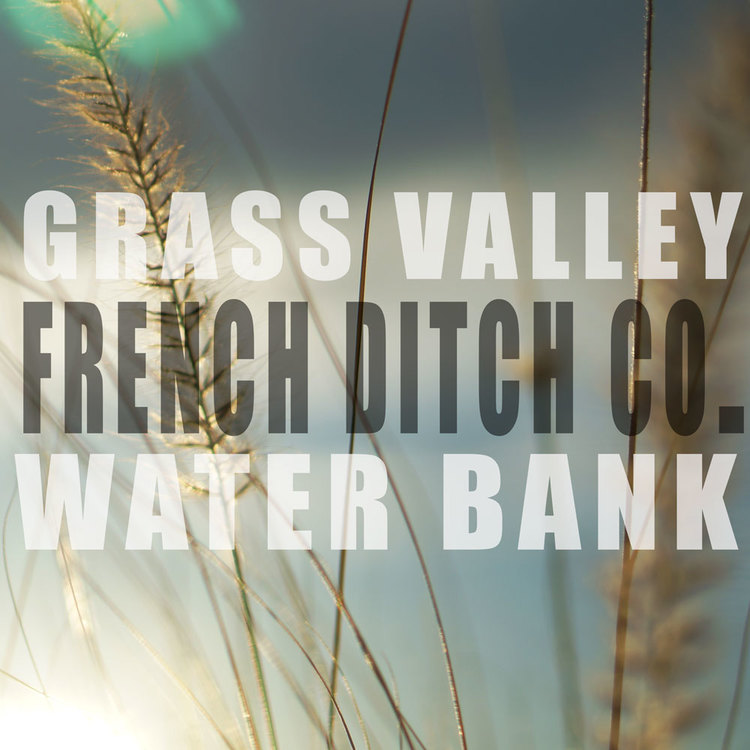For Immediate Release: March 26, 2015
Contacts:
Carl Saunders: phone and email
Tim Fister, GVFDC President: phone and email
Chris Corbin: ?
First Private Water Bank Gets a Green Light in Montana
Grass Valley French Ditch Company is ready to market its senior water rights to mitigate the impacts of future development in the Missoula area.
[MISSOULA, Mont.] – The Grass Valley French Ditch Company, one of Missoula’s oldest and largest irrigation companies, has created Montana’s first private water bank. The Company recently received authorization from the Montana Dept. of Natural Resources and Conservation (DNRC) to add “marketing” as a use for its substantial water rights. This new water bank protects long-standing agricultural shareholders, helps finance maintenance of aging irrigation infrastructure, and offers a source of water for future development in Montana’s second-largest city.
This change authorization allows the Grass Valley French Ditch Company to sell or lease water to mitigate water withdrawals associated with future development in the growing Missoula Valley. Potential buyers include developers of housing subdivisions, businesses looking to offset industrial water use, or even agricultural projects in need of additional irrigation or stock water.
“We realize we live in a landscape where agriculture and residential development will be competing for the same water resources,” says Company President Tim Fister. “This water bank is the best solution for protecting the Company’s water rights while also meeting Montana’s different water needs.”
The Grass Valley French Ditch Company lies in the heart of fast-growing Missoula County, and has diverted water from the Clark Fork River since 1901. The Company historically irrigated 5,489 acres just downstream of the City of Missoula. The main canal is 13.5 miles long, and can divert up to 105.75 cubic feet per second (68 million of gallons per day) from the river.
“This water bank puts us in the driver’s seat as the Missoula Valley grows and changes,” says Board Vice-President Carl Saunders. “We’ve been managing water rights in the valley for a long time, and want to continue that tradition.”
The Company shifted its structure to differentiate between A shares, which are used for irrigation and include voting rights for shareholders, and B shares, which can be used for mitigation and do not come with voting rights. The board made this change to their century-old structure in order to meet these goals: maintain the canal that carries river water where it’s needed for irrigation; ensure Company water rights are put toward a beneficial use as historically irrigated land converts to urban or suburban use; and secure an additional source of revenue for important maintenance and repairs on irrigation infrastructure. In addition, the Company received a mini-adjudication of their substantial water rights during the DNRC’s thorough authorization process, which will save the Company money down the road in potential litigation fees.
A water bank is designed to facilitate efficient trades among water users. Across much of Montana, water is over-appropriated, meaning more water is allocated than is physically available in streams or rivers. As such, many areas are closed to new water appropriations, including the Missoula Valley. Any new water use that requires more than a small permit-exempt well is required to mitigate, or offset, its impact on groundwater or nearby surface waters. Before the Company’s water bank was approved, this often meant having to buy and convert senior irrigation water rights to instream flow, an expensive and difficult option. Now, developers can purchase or lease mitigation water much more simply from the Grass Valley French Ditch Company.
The Company’s vision for a water bank has been in the works for almost a decade. Shareholders first decided to explore water marketing options in March 2008, when the board of directors voted to change the bylaws to recognize certain company “shares” for water mitigation. A few months later, the Company submitted an application to the DNRC requesting a change of use from “irrigation” to “marketing” for some of its water rights.
After seven years of administrative and legislative hurdles -- including dozens of meetings, presentations, applications, and even statewide enabling legislation that required the DNRC to draft new rules for water marketing -- the Company was finally granted the authorization to market some of its water rights as mitigation for new water development in the Missoula area.
The Company worked closely with the DNRC throughout the process to ensure their water bank could be used as a model moving forward. (insert quote from Tim Davis)
In addition, the Company is partnering with the Clark Fork Coalition, a non-profit organization focused on protecting and restoring waters in Western Montana, to meet the DNRC-required monitoring component of delivering mitigation water. (insert quote from CFC)
For more information on the Grass Valley Ditch Company and its new water bank, please visit www.XXXX
